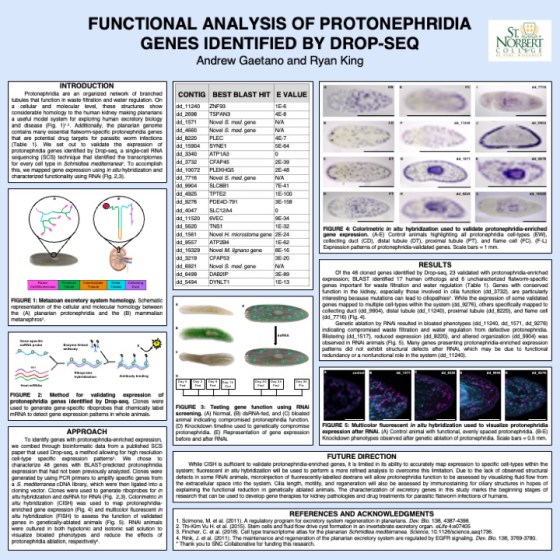Andrew Gaetano Biology, Biomedical
Ryan King Associate Professor of Biology
Presentation Time: April 28, 3:30pm – 4pm

View Poster
Abstract
Schmidtea mediterranea, the freshwater planarian, possesses protonephridia, which are an organized network of branched tubules that function in waste filtration and water regulation. On a cellular and molecular level, these structures show considerable homology to the human kidney making planarians a useful model system for exploring human excretory biology and disease (Scimone, 2011 and Vu, 2015). Additionally, the planarian genome contains many flatworm-specific protonephridia genes essential for survival, making them potential drug targets for parasitic worm infections of humans. We set out to validate the expression of protonephridia genes identified by Drop-seq, a single-cell RNA sequencing technique that identified the transcriptomes for every cell type in S. mediterranea (Fincher et al., 2018). To accomplish this, we mapped gene expression using colorimetric and fluorescence in situ hybridization and characterized gene functionality via RNA interference screening (RNAi).



1 Comment
Add Yours →Congratulations Andrew on this fascinating research